Welcome back for Part Two of this month’s author roundtable series! Last week, we met the awesome poets of the HWA Poetry Showcase, Volume 6 and learned about their pieces for the anthology. This week, we’re discussing what drew them to horror in the first place.
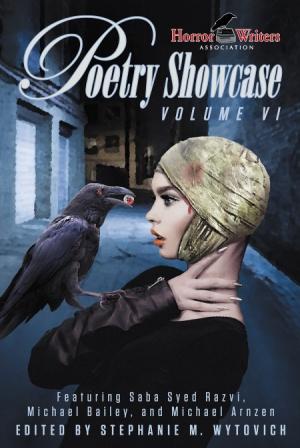
So once again, let’s take it away!
How did you first become drawn to the horror genre? Was it a specific story or film that caught your attention, or the general feeling that horror inspires?
CURTIS M. LAWSON: I would credit either A Nightmare on Elm St. or John Carpenter’s adaptation of Christine for sparking my love of horror and dark art in general. It all began in the horror section of the video store as a kid.
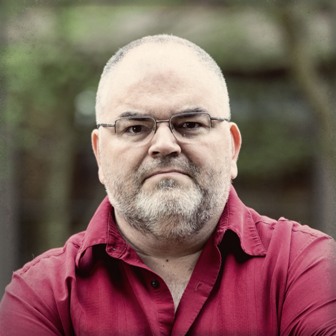 PETE MESLING: I know I’m not the first to say this, and maybe you’ll get a similar answer from others in this round table, but it’s true: some of us are simply born with an attraction to the dark. I was writing horror stories in my dad’s legal pads when I was seven, and I remember being an elementary school student and feeling absolutely mesmerized by the artwork that always accompanied Halloween. Even the cheesiest bats, ghosts, haunted houses, and vampires sparked my imagination. By fifth or sixth grade I had discovered Poe and Orwell, and I grew up in the ’80s, so I was there for the explosion of that whole scene: Clive Barker, Robert McCammon, Stephen King—not to mention the horror films that were being churned out like canned tuna back then.
PETE MESLING: I know I’m not the first to say this, and maybe you’ll get a similar answer from others in this round table, but it’s true: some of us are simply born with an attraction to the dark. I was writing horror stories in my dad’s legal pads when I was seven, and I remember being an elementary school student and feeling absolutely mesmerized by the artwork that always accompanied Halloween. Even the cheesiest bats, ghosts, haunted houses, and vampires sparked my imagination. By fifth or sixth grade I had discovered Poe and Orwell, and I grew up in the ’80s, so I was there for the explosion of that whole scene: Clive Barker, Robert McCammon, Stephen King—not to mention the horror films that were being churned out like canned tuna back then.
CARINA BISSETT: My roots in horror come from the fairy tales I devoured as a child. When I wasn’t buried under stacks of library books, I spent my time reading the classics in The Companion Library series (1963), which features 28 tales including The Wizard of Oz, Alice in Wonderland, and Arabian Nights. But my favorite of all was the double-sided volume containing Andersen’s Fairy Tales on one side and the Grimm Fairy Tales on the other. This one volume has been read so many times the binding has crumbled, the spine is cracked, and the only thing keeping it together is a large rubber band. Over the years, it was the blood-soaked originals that helped me to survive, just as they still help me process the world today.
ROBERT PAYNE CABEEN: The Universal horror movies were certainly my gateway to the genre, but when I discovered EC horror comics, when I was in art school, I was all in. Al Feldstein was one of the most important horror writers of the 20th century. He wrote and edited those amazing comics–he even illustrated many stories and covers. I’ve heard Stephen King, George R.R. Martin, R.L. Stein, George Romero, and many others credit EC Comics as their earliest inspiration to write horror. I’m just another of Al’s mutant spawn. He was my friend and mentor. I was proud to dedicate my Bram Stoker Award to him in Providence.
MONICA S. KUEBLER: My mother used to watch Doctor Who on TV when I was very young. The theme music drew me in and the aliens and monsters glued me to the set. From there, I kept exploring and expanding my genre horizons.
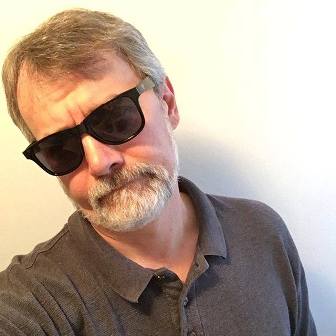 MICHAEL ARNZEN: I think growing up in Amityville, NY, during the time when the DeFeo murders transpired (I saw the funeral coverage on the TV news as a child) and working in a store downtown when The Amityville Horror book was released made a real impact on me. But even more so, my father used to take me with him to the theater when I was a wee lad to see all those classic 70s golden age horror films because my mother wouldn’t go — Jaws, The Exorcist, The Omen… I remember them all vividly. Sure, he’d cover my eyes during the gory and sexy parts… but that only made my imagination kick into overdrive. Probably too young to know any better, I started reading the novel tie-ins related to all these films and others I’d heard people talking about and the rest was history. After I started reading Stephen King much later, I knew I was forever a horror fan, and started trying my hand at it myself.
MICHAEL ARNZEN: I think growing up in Amityville, NY, during the time when the DeFeo murders transpired (I saw the funeral coverage on the TV news as a child) and working in a store downtown when The Amityville Horror book was released made a real impact on me. But even more so, my father used to take me with him to the theater when I was a wee lad to see all those classic 70s golden age horror films because my mother wouldn’t go — Jaws, The Exorcist, The Omen… I remember them all vividly. Sure, he’d cover my eyes during the gory and sexy parts… but that only made my imagination kick into overdrive. Probably too young to know any better, I started reading the novel tie-ins related to all these films and others I’d heard people talking about and the rest was history. After I started reading Stephen King much later, I knew I was forever a horror fan, and started trying my hand at it myself.
ADELE GARDNER: I’ve loved spooky stories ever since I was a kid, even when they scared the pants off me. I remember being terrified of two children’s books in particular: The Frightful Nobody (based on the song by Bonnie Sanders and Susan Green; illustrated by A. Jefferson) and What Was I Scared Of? (i.e., the Pale Green Pants, by Dr. Seuss). While these books still give me the creeps, I never stopped wanting to read them…even when I had to call my dad in the middle of the night to hide The Frightful Nobody under the sofa cushions downstairs!
RISSA MILLER: As a little girl, I was sure I saw ghosts and other entities in the world around me, and often drew them or wrote about them. I still have many of the drawings and can sharply recall the beings that inspired them. As I got older, I fell in love with the vampires of The Lost Boys, as well as the early work of R.L. Stine, back before he even started Goosebumps! The thing is, many people recognize the fear factor in horror, but not the recognition of self. The monster or vampire or witch is frequently thought of as “other,” but to me, in my own life and work, I see the monster as just another piece of the experience of living. Trying to understand and embrace the monster in ourselves is why horror resonates.
E.F. SCHRAEDER: Hmm, 150 words! A combination of things drew me to horror, and I remember lugging around a pocket Poe for quite a while as a kid (I still have it, beautifully worn at the edges). Fueled by librarians, I was fed a steady diet of American gothic growing up, and I developed an abiding fondness for writers that looked at the underbelly of things, noticed the unobserved, or held a slightly weird POV. In terms of films, Hammer Horror and Roger Corman films were early favorites; by the time I encountered the sci-fi-horror thrill ride Ripley delivered in Alien, I was all in.
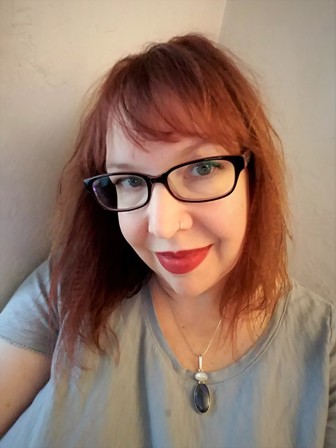 SUZANNE REYNOLDS-ALPERT: I’ve always been drawn to horror, but my “gateway drug” was scifi. Two of my favorite movies from childhood were Planet of the Apes and Alien.
SUZANNE REYNOLDS-ALPERT: I’ve always been drawn to horror, but my “gateway drug” was scifi. Two of my favorite movies from childhood were Planet of the Apes and Alien.
MARTY YOUNG: I blame my dad! He worked in a video store when I was young and would bring home boxes filled with video tapes that needed checking for broken or crinkled tapes, that kind of forgotten thing! He loved horror and would let me sit with him and we’d ‘check’ the horror movies together. Then I met Freddy and discovered Fangoria, and I was hooked.
ROBERT CATINELLA: Every person knows disgust, unease, fear and have had moments of extreme emotion, so every creator has a history to pull from that is instantly relatable. This is double edged because anything created with less than full honestly will instantly be recognized as disingenuous. Horror is catharsis. Such primordial feelings in safety provide a release that can make someone feel alive.
A part of me wants to point to the works for Alfred Hitchcock as the main cultivating factor in my horror upbringing, but every time I think back, I always am faced with the gaunt and cackling face of the crypt keeper. My siblings and I would stay up late on Saturday night pretending to watch SNL, only to watch Tales from the Crypt on late night network television.
NICOLE CUSHING: I went to my first funeral (and touched a corpse for the first time) in 1979, when I was six years old. So I gravitated to spooky books and television shows because they seemed to acknowledge an aspect of life that ordinary children’s entertainment didn’t. Mr. Rogers never took a field trip to a funeral home, am I right?
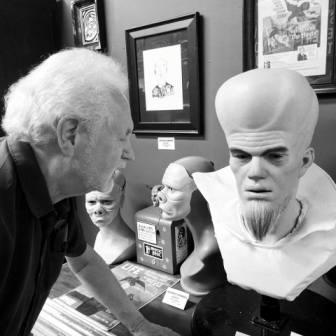 G.O. CLARK: My earliest exposure to horror was old movies on the TV. Dracula, The Wolfman, et al. Books followed later in life, like The Exorcist, Bram Stoker’s Dracula, Interview With The Vampire, and more. I read all kinds of books, whatever grabs my interest, more non-fiction at this point in my life.
G.O. CLARK: My earliest exposure to horror was old movies on the TV. Dracula, The Wolfman, et al. Books followed later in life, like The Exorcist, Bram Stoker’s Dracula, Interview With The Vampire, and more. I read all kinds of books, whatever grabs my interest, more non-fiction at this point in my life.
DAVID SANDNER: Horror scares me. It works on me. I have become used to how it works and what to expect, and yet…I am not inured to it, and that fascinates me. I think it’s funny that we entertain ourselves by scaring ourselves. Sendak’s Where the Wild Things Are is the first horror story to have a lasting impact on me…the monsters have the solidity of their particular weirdnesses…they seem real, but the method used to subdue them—staring at them and commanding them to be still—is singularly unconvincing. The monsters are real and you have no defense. Terrifying! Loved it!
INGRID L. TAYLOR: I was raised on horror movies and books. When I was a kid, my mother worked long hours so I’d rent horror movies and watch them while I waited for her to come home. They were fun and thrilling for me, although there were times when I scared myself quite badly. I particularly liked The Exorcist, Alien, and Pet Sematary but I’d watch anything from the horror section. I read Poe and Hawthorne when I was quite young, and moved on to Stephen King and others. I think I gravitated to horror as a way of coping with the uncertainties and cruelties of life. Horror is not afraid to shine a light into those hidden areas of darkness, and to me, that made it the most real of genres. I believe that horror not only entertains, but also provides incisive social commentary by peeling back accepted norms to interrogate the values and beliefs that lie underneath.
JOHN CLAUDE SMITH: My parents were fans of horror and science fiction, so I was raised in an environment where the weird and dark were welcome. I distinctly remember seeing TV shows like the original Outer Limits and Night Gallery and how they left a big impression. This, along with the books my mother had dealing with the psychic sciences and UFO abduction and ghosts, well, my fascination for horror was fueled from the get-go. Add to this, when I was about 7-8 years old and my mother gave me a horror anthology that opened with a H.P. Lovecraft tale, one of his more fantastical ones—I believe it was one of the Silver Key tales—the ambience in that tale haunted me for quite a while. The power of words to take me there—I was hooked!
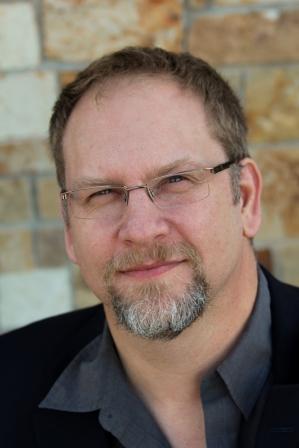 TRAVIS HEERMANN: I remember always being fascinated by it. I remember sitting straight up in my bed when I was four years old, head covered by my blanket, afraid to move or the werewolves would get me.
TRAVIS HEERMANN: I remember always being fascinated by it. I remember sitting straight up in my bed when I was four years old, head covered by my blanket, afraid to move or the werewolves would get me.
A few films from childhood stuck with me. I can remember being unable to sleep after some of them even if they were ostensibly comedies, in particular I happened to catch The Fearless Vampire Killers one night at a sleepover when I was maybe seven or eight, and that was the beginning of my horrified fascination with vampires, reinforced by catching the opening of one of the Hammer Dracula films on late-night TV, and being so horrified I shut it off and ran from the room.
I used to page through issues of Eerie, Creepy, Famous Monsters, Fangoria and Starlog at the drug store magazine rack, even though I could never bring myself to buy a copy. They were too expensive for what I could manage as a 10-12-year-old, and I think my parents would have had a conniption. Those magazines felt so grown-up and transgressive. I did have a fair stack of horror comics as a kid, though, like DC’s House of Mystery. That was a favorite.
ANN K. SCHWADER: When I was extremely young, I met up with Ray Bradbury’s “The Veldt.” I’ve been attracted to the H / SF borderline ever since.
DONNA LYNCH: There’s no short answer for this, haha! I actually just wrote a very long essay about it for Speculative Chic. As a little kid I loved Poe, I loved scary stories, but I was terrified of horror movies. And I was convinced everything was haunted, me included. My first horror movie was Burnt Offerings, followed by Friday the 13th—which ruined me—but the first one that won me over was The Lost Boys.
I had some very dark experiences as a child so my relationship with horror was very complicated. In some ways, it still is. We’ve been together for a long time, probably before I really wanted to be. Maybe it’s Stockholm Syndrome, haha!
LORI R. LOPEZ: I would have to say yes to all of those. I love creating monsters. As a little girl, I was obsessed over a storybook with monsters, Where The Wild Things Are by Maurice Sendak, and Frankenstein movies. By Fifth Grade, the Mary Shelley novel followed by Bram Stoker’s Dracula, plus the movie version and Nosferatu, and so many other classics of cinema since I was small: The Birds, The Blob, The Mummy, The Wolfman . . . on and on. I even won a scholastic award for a Werewolf play in Seventh Grade. Richard Matheson’s work in film and television hooked me. I was clearly drawn to Horror throughout my childhood. That never went away.
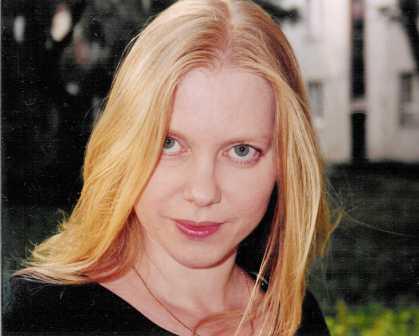 ANNA TABORSKA: When I was little, I used to watch Hammer Horror films, which I loved. But it was George Romero’s NIGHT OF THE LIVING DEAD which made the greatest impact on me at the time and stayed with me. I started reading horror in primary school at age ten (Guy N. Smith) and continued throughout secondary school (Stephen King, James Herbert, Ramsey Campbell and the Pan Book of Horror anthologies). All of these served to reinforce and fuel my love of horror.
ANNA TABORSKA: When I was little, I used to watch Hammer Horror films, which I loved. But it was George Romero’s NIGHT OF THE LIVING DEAD which made the greatest impact on me at the time and stayed with me. I started reading horror in primary school at age ten (Guy N. Smith) and continued throughout secondary school (Stephen King, James Herbert, Ramsey Campbell and the Pan Book of Horror anthologies). All of these served to reinforce and fuel my love of horror.
EV KNIGHT: When I was in sixth grade, I got my first library card (for a library outside of my school) and found a book called Pet Semetary by Stephen King. I lived on top of a hill above my grandparents’ farm house. My uncle and aunt lived across the drive from the big farm house. Dense woods bordered the field behind the house along the hill. It fit all of King’s setting descriptors and made the book so alive to me, that I swear I heard the wendigo every time I made that walk down to visit. That experience awakened my imagination and made even the mundane walk down a hill into an adrenaline-fueled adventure. I wanted more, and the more I read, the more I wanted to try my hand at writing scary stuff.
DAVID POWELL: I can’t remember not loving horror, but the first thing that scared the bejesus out of me was Invaders from Mars. I was eight years old, and the terror of not being able to trust the adults you depend on rocked me. And stayed with me. Horror’s power to make you look at the underside of everyday things is important to me.
MICHAEL BAILEY: In school, I hated reading, mostly because we dissected books until they were unenjoyable. It wasn’t until a friend of mine started bringing ‘inappropriate’ books to class, some author named Stephen King, that I realized books could be fun. These books were doorstops, and intimidating, but my older sister read this guy too, so I knew something was there. And then in eighth grade I had a teacher obsessed with Edgar Allan Poe, and we studied his work throughout the year. “The Tell-Tale Heart” taught me what could be done in as little as a few thousand words. Infatuated, I read everything by Poe, and eventually moved on to Bradbury (Fahrenheit 451 the only required book I ever loved) and finally King. I didn’t start writing until long after high school (other than nonfiction and poetry), then dabbled in college. Half my age ago, I wrote my first piece of fiction, a horror story. Now I have to convince myself not to write my own doorstops.
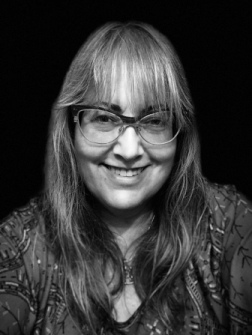 GERRI LEEN: I’m one of the last years of the Baby Boomers, and I think I fell for horror by watching the original Dark Shadows when I was a kid. Most of my friends wanted to marry Barnabas the vampire; I wanted to be Angelique the witch. Then later Night Gallery and Kolchak: The Night Stalker and the movie Trilogy of Terror kept my interest in horror strong—and my lights on at bedtime (that damn doll still gives me the creeps). Even the original Twilight Zone had quite a few horror episodes (I was addicted to the reruns).
GERRI LEEN: I’m one of the last years of the Baby Boomers, and I think I fell for horror by watching the original Dark Shadows when I was a kid. Most of my friends wanted to marry Barnabas the vampire; I wanted to be Angelique the witch. Then later Night Gallery and Kolchak: The Night Stalker and the movie Trilogy of Terror kept my interest in horror strong—and my lights on at bedtime (that damn doll still gives me the creeps). Even the original Twilight Zone had quite a few horror episodes (I was addicted to the reruns).
NACHING T. KASSA: My dad introduced me to horror. He started showing me movies like King Kong, and Dracula (1931) when I was four. He also read me Edgar Allan Poe stories like “The Cask of Amontillado.” When I grew to be a teenager, we watched tons of Eighties horror together. I especially enjoyed A Nightmare on Elm Street and Stephen King’s Silver Bullet.
LISA MORTON: It’s something I’ve always loved. As a kid, my parents watched horror movies with me and my dad and I made the Aurora monster models together, so I was almost born into it, I think.
LEE MURRAY: In the same way that data regresses to the mean, I believe all writers, given enough time, will regress towards horror because it is in the darkness that we explore the things that really matter: things that hurt us, that scare us, and which define humanity.
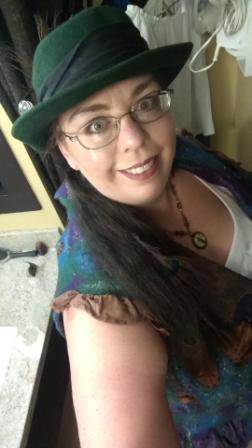 TRISHA J. WOOLRIDGE: I believe I came to horror the way many people came to horror, or the Goth scene… I was mercilessly bullied at school, so I learned from a very young age the extent of evil that humans are capable of. I knew monsters were real; I saw them on the playground every day, in the lunch room, two desks over in a classroom. My family didn’t have a lot of money; books were the cheapest and most abundant entertainment. Between libraries and my mom’s love of yard sales, I was never without a whole world I could escape into that fit right into my hands! My favorite books were anything genre: science fiction, fantasy, and horror. I got metaphors; I could channel heroes and monsters in real life through books and take some control over them because they were in my head. Words were a tool for dealing with one’s greatest hopes and fears, and that was a bit of magic that sparked in my mind—another means of agency in a world that didn’t make sense.
TRISHA J. WOOLRIDGE: I believe I came to horror the way many people came to horror, or the Goth scene… I was mercilessly bullied at school, so I learned from a very young age the extent of evil that humans are capable of. I knew monsters were real; I saw them on the playground every day, in the lunch room, two desks over in a classroom. My family didn’t have a lot of money; books were the cheapest and most abundant entertainment. Between libraries and my mom’s love of yard sales, I was never without a whole world I could escape into that fit right into my hands! My favorite books were anything genre: science fiction, fantasy, and horror. I got metaphors; I could channel heroes and monsters in real life through books and take some control over them because they were in my head. Words were a tool for dealing with one’s greatest hopes and fears, and that was a bit of magic that sparked in my mind—another means of agency in a world that didn’t make sense.
STEPHANIE ELLIS: I’ve always preferred the darker side of films and fiction but it has never been about a specific work. I’m not one of those who avidly watches every horror film (I’m no good with slasher films) or reads every book, so when others quote their ‘pedigree’ and the age at which they started on this path, I always feel a fraud. For me, it’s very much the feeling horror inspires. The moment which makes the flesh crawl or you feel, during the twilight hours – which is my favourite time of day – there is something more to this world. I suppose you could say it’s the psychology of horror which draws me in.
PETER ADAM SALOMON: I’d written novels that hadn’t sold which were not horror. So, as I tried to figure out something new to write about twenty years ago, I re-read all my old poetry and realized that all the good poems were ‘dark.’ The more horror poetry I read, the more I realized I’d found my home. And then, when I started writing horror novels, those were the ones that sold. Growing up I read all the usual suspects, with a particular affinity for Poe, Eliot, and Coleridge and the dread their poetry always seemed to touch upon.
SARA TANTLINGER: I started reading the Goosebumps and Fear Street books around 4th grade, and I was just so drawn to these bizarre stories that were unlike what we were reading in classes. Later in middle school, I discovered Edgar Allan Poe and Stephen King. I was lured into the macabre beauty Poe created, and then the way Stephen King could create a horror story that both disturbed me yet tugged at my heartstrings. I knew I wanted to explore this world more.
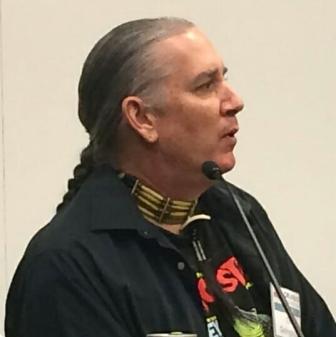 OWL GOINGBACK: I was first drawn to the horror genre by a book I read when quite young, titled The Ghost of Dibble Hollow, about a farmhouse haunted by a spirit from the Revolutionary War. I’ve been a big fan of ghost stories and historic places ever since. Shortly after that I discovered Famous Monsters of Filmland magazine, and fell in love with all the classic monster movies and horror films. I’m still a big monster kid at heart.
OWL GOINGBACK: I was first drawn to the horror genre by a book I read when quite young, titled The Ghost of Dibble Hollow, about a farmhouse haunted by a spirit from the Revolutionary War. I’ve been a big fan of ghost stories and historic places ever since. Shortly after that I discovered Famous Monsters of Filmland magazine, and fell in love with all the classic monster movies and horror films. I’m still a big monster kid at heart.
LISA LEPOVETSKY: My interest in horror came from my parents’ fascination with the genre; my father read my brother and me stories from Poe and Serling and Matheson and Shirley Jackson when we were young.
MARGE SIMON: I was bedridden for long periods when I was child and I read for entertainment. I loved folklore, such as Baba Yaga, and myths and legends which have many shades of darkness, especially for a child’s fertile mind.
DEBORAH L. DAVITT: Horror is a genre that I dip in and out of like a stream. When it’s appropriate to a science fiction or fantasy story, when the going gets rough, horror elements enter. I write a lot of dark stuff, but only rarely do I go full horror—and when I do, it’s often psychological. (“Last Week I was Esther,” at Pseudopod is a good example of my brand of horror.) Authors that have inspired me include King and Barker, but also Tim Powers—where the horror comes from within, a byproduct of human existence and frailty.
COLLEEN ANDERSON: I’d say it was an accident. I was writing SF and fantasy and kept getting rejected with the editors saying, “we don’t do horror.” I thought I was just writing normal spec fic but I guess it was darker edged. Early horror movies, Vincent Price, Ray Bradbury and a tumultuous family life must have mixed into a strange stew. I like to look at the scary, twist its head and see what pops out. I sometimes stick characters into unpleasant sword of Damocles situations and see what happens.
That concludes Part Two of our Poetry Showcase roundtable! Please head back next week as we discuss our authors’ favorite horror poetry!
Happy reading!
